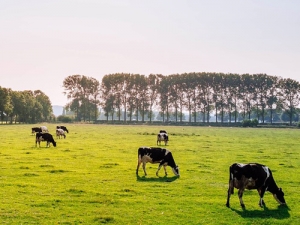Wired for Science: Understanding the feeding habits of mealybug
Fussy children might be frustrating, but fussy mealybugs could help protect the New Zealand wine industry from grapevine leafroll-associated virus 3.
 Research into improving phosphorus recovery and overall use efficiency remains urgent in the face ongoing and future supply and price volatility.
Research into improving phosphorus recovery and overall use efficiency remains urgent in the face ongoing and future supply and price volatility.
Research into improving phosphorus recovery and overall use efficiency remains urgent in the face ongoing and future supply and price volatility.
So says Lincoln University Professor of Biogeochemistry Leo Condron.
His work on recovering and recycling existing phosphorus addresses worldwide concern that finite reserves of readily accessible but non-renewable phosphate rock are being steadily exhausted as demand continues to increase.
He believes efforts to improve phosphorus use efficiency and recycling of phosphorus in waste will potentially benefit both phosphorus rich and phosphorus poor parts of the world.
Phosphorus fertiliser use has been concentrated in Europe, North America, India, China and parts of South America and Australasia, and consequent elevated levels of phosphorus in soil have contributed to declining water quality in many areas related to accelerated eutrophication.
On the other hand, large areas of Africa, Asia and South and Central America have had limited access to phosphorus fertilisers, and it is widely acknowledged that significant inputs of phosphorus and other nutrients are required to increase food production to meet ever increasing demand.
Only 10-50 percent of phosphorus applied as fertiliser is taken up by plants and removed in produce, while the rest remains in the soil. Professor Condron says mobilising this "legacy" phosphorus in soil could be achieved using new and novel combinations of plants and associated microbes in agricultural systems.
However this could have mixed results. While it may enhance plant uptake and reduce fertiliser requirement, it could also increase the risk of phosphorus loss in drainage. At least part of the increased pressure on phosphorus resources could also be alleviated by improved utilisation of fertiliser phosphorus and recycling of phosphorus contained in various agricultural and urban waste streams.
Prior to 2007 the price of phosphorus was relatively stable, but by 2008 the cost had increased four-fold due to a combination of factors related to supply and demand, and while the price has subsequently decreased it remains relatively high. This spike led to an urgent reassessment of phosphate rock reserves, and while some initial evaluations indicted that demand could exceed supply by 2030 (peak phosphorus), this has since been extended by at least 100 years.
Although phosphorus is found in many parts of the world, prior to the price increase it was not economic to mine many of the reserves. Professor Condron says that peak phosphorus won't happen anytime soon if new reserves are mined, but global supply and price are likely to be determined by the actions of Morocco, who control over 50 percent of known phosphate rock reserves.
Phosphorus plays an essential role in agriculture and global food production. Fertiliser was first made from phosphate rock in the mid-nineteenth century, and contributed to dramatic increases in crop productivity. The amounts of phosphorus in managed agricultural systems has changed significantly since then, with the benefits unevenly distributed around the world.
Last month's Agritechnica event led to a wide group of manufacturers celebrating successes when the 2026 Tractor of the Year Competition winners, selected by a panel of European journalists, were announced in Hanover Germany.
According to the latest Federated Farmers banking survey, farmers are more satisfied with their bank and less under pressure, however, the sector is well short of confidence levels seen last decade.
Farmer confidence has taken a slight dip according to the final Rabobank rural confidence survey for the year.
Former Agriculture Minister and Otaki farmer Nathan Guy has been appointed New Zealand’s Special Agricultural Trade Envoy (SATE).
Alliance Group has commissioned a new heat pump system at its Mataura processing plant in Southland.
Fonterra has slashed another 50c off its milk price forecast as global milk flows shows no sign of easing.